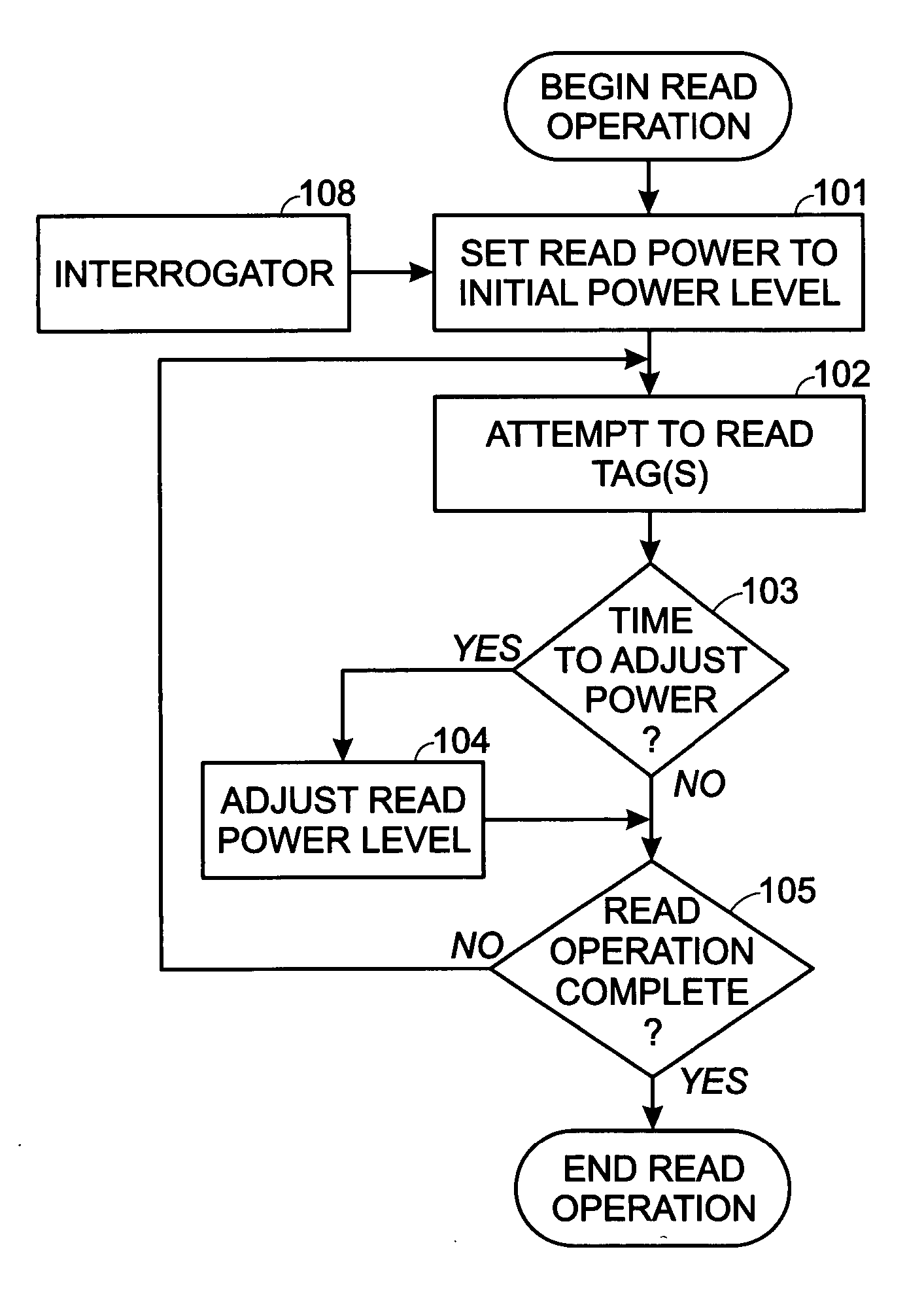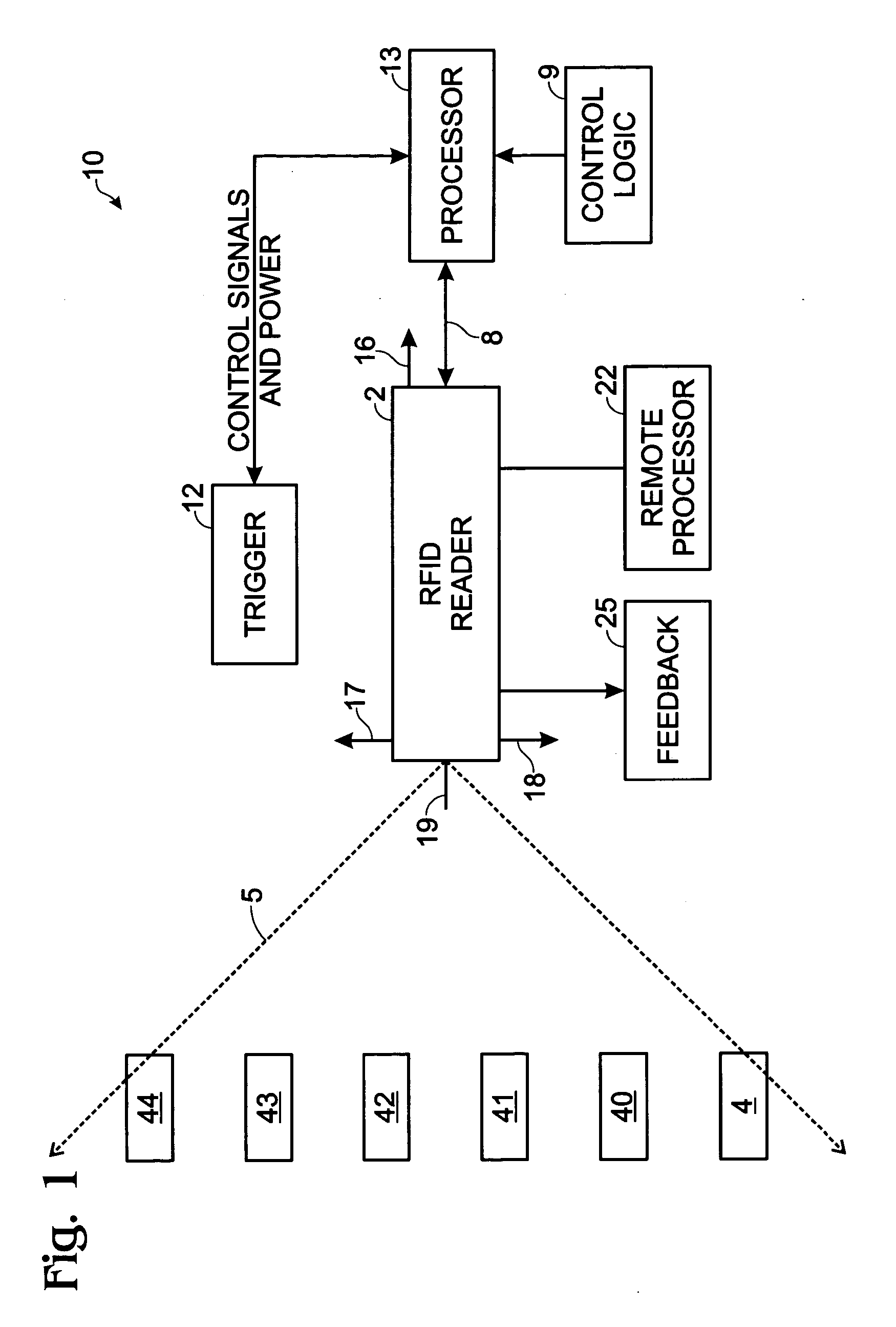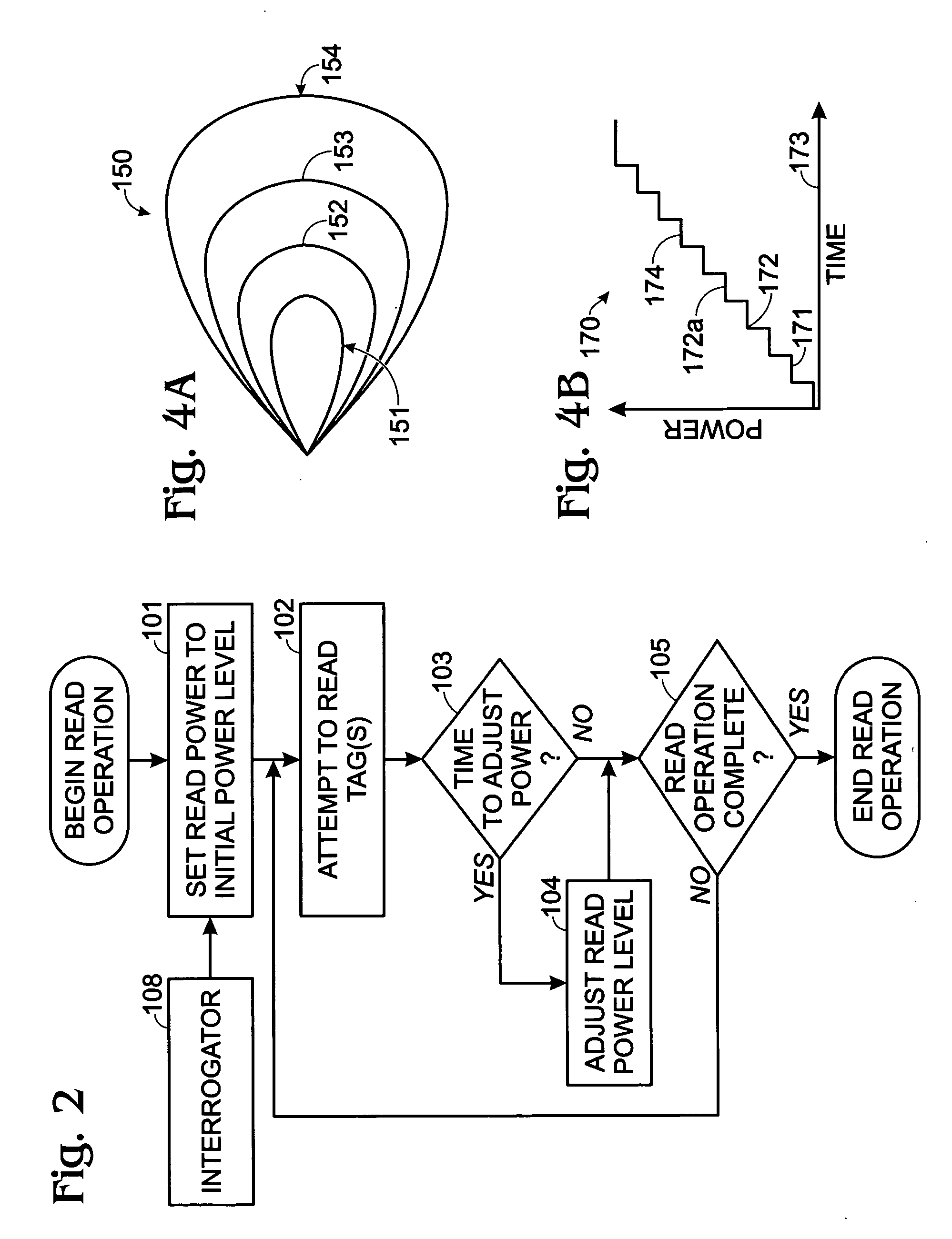RFID power ramping for tag singulation
a technology of rfid power ramping and tag singulation, which is applied in the field of rfid readers, can solve the problems of successive tags, reducing the accuracy of reading each individual tag, and reducing the overall power consumption of hand-held rfid readers. , the effect of reducing the antenna size and cos
- Summary
- Abstract
- Description
- Claims
- Application Information
AI Technical Summary
Benefits of technology
Problems solved by technology
Method used
Image
Examples
Embodiment Construction
[0026] While the preferred embodiments are described below with reference to a RFID tag, a practitioner in the art will recognize the principals described herein are viable to other applications.
[0027] In a preferred embodiment as shown in FIG. 3, the multiple-technology data reader 200 includes the optical and analog front end components of a bar code reader 220. This reader 200 further includes an antenna 44 and transmitter / receiver components of an RFID interrogator 240, which are connected to a device microcontroller 225. The microcontroller 225 includes a decoder and control interface 228a for the bar code reader and another control interface 228b for the RFID reader. The decoder and control interfaces 228a and 228b are connected to a device communications control and power unit 260. The multiple technology data reader 200 also includes a trigger unit 270, which sends and receives control signals and power, both to and from the device communications control and power unit 260 ...
PUM
 Login to View More
Login to View More Abstract
Description
Claims
Application Information
 Login to View More
Login to View More - R&D
- Intellectual Property
- Life Sciences
- Materials
- Tech Scout
- Unparalleled Data Quality
- Higher Quality Content
- 60% Fewer Hallucinations
Browse by: Latest US Patents, China's latest patents, Technical Efficacy Thesaurus, Application Domain, Technology Topic, Popular Technical Reports.
© 2025 PatSnap. All rights reserved.Legal|Privacy policy|Modern Slavery Act Transparency Statement|Sitemap|About US| Contact US: help@patsnap.com



